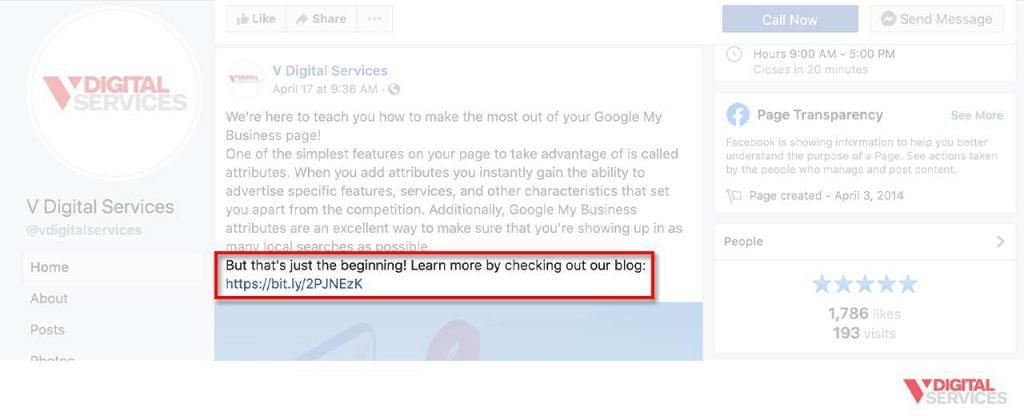Spend even a few minutes researching social media marketing statistics, and you can plainly see why so many brands and businesses are pouring money, time, and effort into their social media presence.
With more than 400 billion people active on social media as of early 2020, you’re virtually always just a click away from your next customer. Not only is a solid social media content strategy important to your brand’s success, but it’s also vital to your survival. But we don’t have to tell you that – odds are, you’re here because you already know that social media currently reigns supreme.
Social Media: A Modern Marketing Must
Most business owners are well aware that social media should now be a part of the foundation of their marketing strategy. Recognizing the value of social media is the easy part; the challenge is learning how to master social media content creation in the fast-paced, competitive, and unique realms of platforms like Facebook, Instagram, and LinkedIn.
According to an article from Forbes, most Americans will encounter upwards of 10,000 online advertisements every day. With such a staggering number of advertising messages launched at us every single day, it makes sense that consumers are even harder to impress these days. Your brand has to work smarter (but not necessarily harder) to make sure that your social media strategy hones in on creating engaging, effective content that will reach your target audience and drive successful conversions.
So, how do you learn to think like an experienced social media content creator and devise the type of content that will stop the right users mid-scroll? There’s no question that learning the ins and outs of social media marketing takes extensive experience and plenty of skill, which is why social media strategy has become an incredibly in-demand and highly specialized profession. But that doesn’t mean you can’t build some basic knowledge of your own and learn some tricks of the trade to benefit your brand.
We’re going to give you an inside look at how to create content for social media, pulling the best tips we’ve learned for results-driven content creation during our years of hands-on experience. Consider this a tell-all on the secrets of social media success, your go-to guide packed with all the information you need to start crafting high-quality content that sets your company apart from competitors, generates leads, and connects you to consumers in a meaningful way.
What is Social Media Content Creation?
Social media content creation is exactly what it sounds like: the process of generating content for use on various social media platforms. But beyond that, it’s all about finding the formula for content that engages your target audience, authentically represents your brand, enhances the customer experience, and produces measurable results.
Depending on a broad range of factors (including your industry, customers, and goals), your social media content creation plan could include a variety of popular platforms, such as:
- YouTube
- TikTok
The Secret to Social Media Success: Smart Strategies
When you’re developing a content marketing plan for social media, there’s not necessarily a cookie-cutter approach that can guarantee instant success. Every audience, brand, industry, and platform is unique, and the tides of social media are always changing – what works today may not work tomorrow.
 However, there are some basic best practices for social media for businesses that can definitely come in handy for business owners who want to get a solid start. Here are our top tips for boosting your brand with social media content marketing.
However, there are some basic best practices for social media for businesses that can definitely come in handy for business owners who want to get a solid start. Here are our top tips for boosting your brand with social media content marketing.
Consider the customer and their journey.
It should go without saying that you need to know who your customers are before you can figure out a content strategy. Sure, you can probably rattle off your target audience’s basic characteristics: demographics, age, gender, pain points, and how your products or services can help them. But beyond that, how well do you really know them?
We live in the era of experience, in which brands have to learn how to shape valuable experiences in the online realm before consumers even consider doing business with them. Before you can do that, you’ll need to have a well-rounded understanding of your customers on a deeper level.
Many companies achieve this by creating a buyer persona. A buyer persona tells the “story” of your target customer through a semi-fictional representation. Using a combination of existing customer data and market research, you can construct a buyer persona that details customer goals, motivations, behaviors patterns, challenges, preferences, and more. Once that’s complete, you’ll have a much better idea of the content that will best engage the people who you want to become your customers.
Then, consider the full scope of the buyer’s journey. At each stage, your target audience is at a different point of processing their decision to do business with your brand:
- In the awareness stage, a buyer becomes aware that they have a need or a problem.
- In the consideration stage, a buyer more clearly defines their problem and then begins to research potential solutions.
- In the decision stage, a buyer selects a solution.
Think about how your content strategy can serve buyers in each of the three stages and how it can help guide them through the journey in a way that leads them to decide on moving forward as a customer of your business.
Do an audit of your existing content.
If you’ve already been using social media for your business, start by conducting a social media content audit to assess which of your posts performed well – and which ones fell flat. Sometimes, you might be surprised to see that certain posts didn’t connect with your audience in the way you expected.
 Although this can be frustrating, it’s also an excellent learning experience: look closely at underperforming content to see if you can pinpoint the reason why it didn’t work. Maybe your language or tone wasn’t in line with your brand’s voice, or the content itself was poorly timed or less relevant than you thought. Be honest in your evaluation, looking at each post from the perspective of a critical and highly intelligent audience.
Although this can be frustrating, it’s also an excellent learning experience: look closely at underperforming content to see if you can pinpoint the reason why it didn’t work. Maybe your language or tone wasn’t in line with your brand’s voice, or the content itself was poorly timed or less relevant than you thought. Be honest in your evaluation, looking at each post from the perspective of a critical and highly intelligent audience.
If you’re just joining social media, then you don’t have content to audit – and that’s ok. There will be many more opportunities for measuring content success down the line.
Put a plan into place.
With your research in hand, you’re now equipped to start devising a content strategy.
Take some time to think about what a successful content strategy would look like for your company: what would the ideal results of your social media efforts mean for your brand?
It can be helpful to break larger goals down into smaller, more tangible steps. For example, perhaps you want to strengthen brand loyalty and really work on building a strong base of returning customers that spread a positive message about your company and frequently refer you to potential customers. In terms of content marketing and social media, that might manifest as a steady increase of followers, more engagement, and more of your posts being shared.
Having concrete, measurable goals in place is an important part of creating (and implementing) an effective plan for your social media marketing tactics. When you know precisely what positive results will look like, it makes planning – and assessing your progress – that much easier.
It’s not unusual for companies to lose sight of their long-term content goals and end up putting considerable effort into an array of aimless marketing campaigns, blog content, and posts on Instagram, Facebook, and Twitter alike. You should be able to draw an obvious connection between every piece of content and one or more of your core goals, especially if you want to make the best possible use of your time and budget.
Create, publish, and repurpose high-quality content.
Finally, all the pieces are in place for you to begin generating content. Whether you’re working on a blog post, an Instagram Story, a YouTube video, or a Facebook advertisement, the goal is to become a trusted partner and a valuable source of information for your followers.
 Most people will probably arrive at your page or profile because they saw something – maybe a shared post, a tag, or something similar – that caught their eye. Now, you need to hold their attention and show them exactly what you have to offer, and you need to do it quickly.
Most people will probably arrive at your page or profile because they saw something – maybe a shared post, a tag, or something similar – that caught their eye. Now, you need to hold their attention and show them exactly what you have to offer, and you need to do it quickly.
Luckily, you’ve done the work of finding out exactly who your target audience is and what they want and expect from you. With that information, developing relevant and compelling content should be significantly easier.
Here are a few short and sweet tips for crafting content that gets your message across:
Understand storytelling vs. selling
If a user wanted to hear a blatant sales pitch, they wouldn’t be scrolling social media – so don’t bore or insult them with a pushy or poorly veiled sales pitch. Today’s consumers are smarter than ever, and they can spot inauthentic content a mile away. Instead, focus on telling a story through your content, one that demonstrates exactly who you are, what you have to offer, and how your brand can improve the lives of your customers. Let your audience see what they have to lose if they don’t take the next step, as well as all there is to gain.
Don’t underestimate the value of a crystal-clear CTA
Your call-to-action (CTA) is the driving force that propels a user in the direction of conversion, making it one of the most critical elements in your content. It’s your job to guide your online audience to the next step, whether that’s visiting your website, making a purchase, or contacting you. Don’t try to “trick” users into taking action; instead, create content and a CTA that makes their decision easy.
 Prove your credibility by providing reliable data sources
Prove your credibility by providing reliable data sources
Anyone can say anything on social media, but that doesn’t make it true. If you’re making a claim, you had better be prepared with data that backs it up. Depending on the content, your data could be industry publications, scientific sources, or even customer reviews and testimonials. Ultimately, your audience is looking for confirmation that they can trust you and that you’re a reputable member of your industry – make sure you give it to them.
Make consistent engagement a top priority.
If you want to really see results, remember that an excellent social media marketing plan goes beyond publishing interesting content. The key word here is “social”: there needs to be a certain level of interaction and engagement between a brand and online users for a true connection to be made.
 While a user may initially arrive at your social media page simply seeking basic information, they’ll also be building an impression of your brand that’s based on how you’re representing your business online. For example, suppose they notice that your page is filled with ad-centric content, and there’s no return engagement with users that have asked questions or posted comments.
While a user may initially arrive at your social media page simply seeking basic information, they’ll also be building an impression of your brand that’s based on how you’re representing your business online. For example, suppose they notice that your page is filled with ad-centric content, and there’s no return engagement with users that have asked questions or posted comments.
In that case, a user can easily perceive your brand as inauthentic and disinterested in customer relationships. On the other hand, if they see that you engage in a genuine and positive manner, it’s going to make your company stand out – especially if your competitors aren’t doing the same.
Staying on top of your social media pages can be time-consuming, which is another reason that many companies hand the task over to a professional. An experienced marketer can make sure that all interactions with followers and users are staying consistent with your brand voice and message while also demonstrating a high standard for service.
Use data-based tools to evaluate performance and progress.
Just about every major social media platform has management tools for businesses and brands, making it simple to see how your content is performing. Platforms like Facebook, Instagram, and LinkedIn provide valuable analytics and data so that you can make connections between your content and specific goals.
 For example, let’s say that you are working to increase brand awareness by gaining followers on your Facebook page. You can clearly see how your follower count changed after each post, helping you determine which ones were most successful. This way, you’re able to turn your ideas for content into substantiated, data-driven tactics that you can confidently say are working in your favor.
For example, let’s say that you are working to increase brand awareness by gaining followers on your Facebook page. You can clearly see how your follower count changed after each post, helping you determine which ones were most successful. This way, you’re able to turn your ideas for content into substantiated, data-driven tactics that you can confidently say are working in your favor.
Here are some of the basic social media metrics that you can use to decide how well your content is supporting your overall goals:
- Engagements: The number of clicks, shares, reactions, and/or comments a post receives
- Awareness: The number of times users viewed your content, quantified in impressions and reach
- ROI: Referrals and conversions that come from external sources
Think of your initial content goals as an anchor for your strategy as you utilize data and analytics to inform targeted adjustments to your content.
How Your Brand Can Benefit from a Professional Social Media Content Strategy
For any business owner that’s ever considered hiring a professional content creation team for social media marketing, there’s usually a question of whether or not it’s really that difficult to put together some social media posts and call it a day. Is it worth it to hire a social media expert for your brand? After all, most of us spend a solid chunk of time on social media solely for entertainment purposes – in fact, the average American is scrolling their social media platforms for almost three hours every day, according to information from the World Economic Forum.
 How different could it really be to post on your social media channels using a branded business account? Many business owners are tempted to try to tackle social media on their own but then find themselves frustrated when they fall short of their content goals.
How different could it really be to post on your social media channels using a branded business account? Many business owners are tempted to try to tackle social media on their own but then find themselves frustrated when they fall short of their content goals.
As you’re learning now, using social media for marketing is both an art and a science. It requires significant skill and an in-depth understanding of how and why users engage with content, the thought process of a user that converts to a customer, and so much more. With social media, you can wield power over a global audience, but only if you understand how to use the tools at hand.
That’s why hiring a social media content creator is frequently the right move for a brand that’s ready to take the next step in its marketing goals. The expectation of engagement never ends in the online world, which is why content planning, publishing, auditing, and engagement has truly become a full-time job. With experts on your side, you can have the advantage of knowing that your social media efforts are informed by data, goals, and marketing best practices and that there is an experienced professional behind the wheel.
Build Your Brand’s Social Media Strategy with V Digital Services
Now, you’re better prepared to begin working on a content marketing strategy for use on social media. But even when you’re armed with useful information, putting it all into action can feel like a challenge.
 That’s where V Digital Services comes in. Our knowledgeable team of social media experts and content creators are here to turn your social media channels into a source of sales and long-term success. We’re ready to meet you where you are in the process of social media marketing, helping you navigate the digital content creation landscape with confidence. And if your brand doesn’t have a single social media account, zero followers, or is starting from scratch with no content, don’t worry – you can only go up from here.
That’s where V Digital Services comes in. Our knowledgeable team of social media experts and content creators are here to turn your social media channels into a source of sales and long-term success. We’re ready to meet you where you are in the process of social media marketing, helping you navigate the digital content creation landscape with confidence. And if your brand doesn’t have a single social media account, zero followers, or is starting from scratch with no content, don’t worry – you can only go up from here.
Let us show you how social media can be one of your most valuable marketing tools now and in the future. Reach out to V Digital Services to start learning more now!
Image Credits: Tiko Aramyan/Shutterstock


 PREVIOUS
PREVIOUS